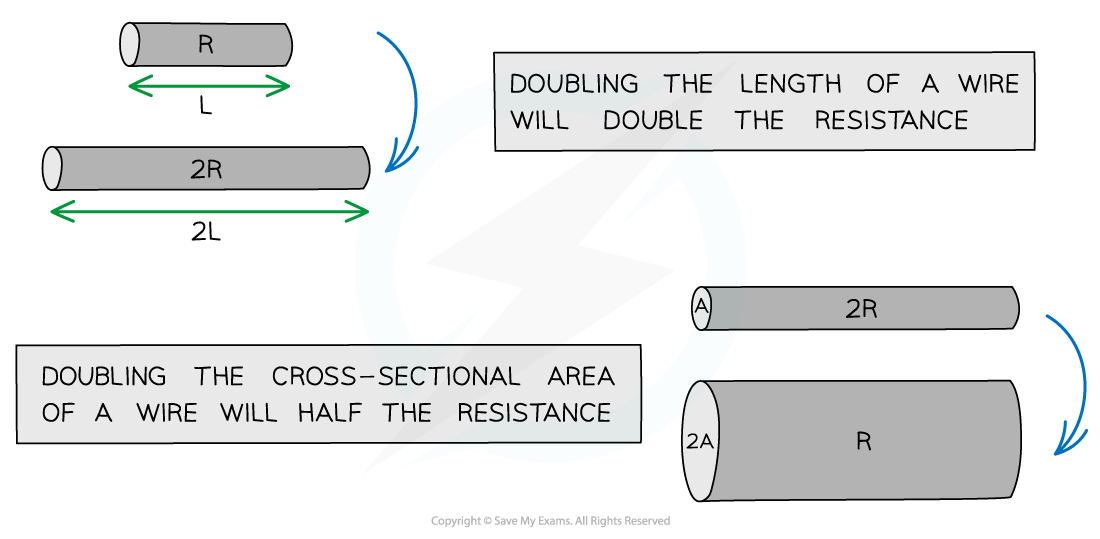Electrical Resistivity
- The resistance of a sample depends on:
- The material it is made of
- The length of the sample
- The cross-sectional area of the sample
- The resistance of a conductor (e.g. a wire) is:
- Directly proportional to its length
- Inversely proportional to its cross-sectional area

How the dimensions of a wire (i.e. length and width) affect its resistance
- The cross-sectional area of a wire is always modelled as a circle
- Therefore, the cross-sectional area is πr2, where r is the radius of the wire
Resistivity
- This leads to the definition of a new quantity, called resistivity
- Resistivity is a property describing the extent to which a material opposes the flow of electric current through it
- It is defined as follows:
The resistivity of a material is equal to the resistance per unit length of a material with unit cross-sectional area
- The equation for the resistivity is:
- Where:
- ρ = resistivity in ohm-metres (Ω m)
- R = resistance in ohms (Ω)
- A = cross-sectional area of material in square metres (m2)
- L = length of material in meres (m)
- Resistivity is measured in ohm-metres (Ω m)
- Resistivity is the property of a material
Resistivity of Materials Table

- Conductors, such as metals, have low values of resistivity
- This makes metals, such as copper and aluminium, ideal for making wires as they have low values of resistance, which is why they are excellent conductors
- Whereas insulators have such high values of resistivity that virtually no current will flow through them
- This is why insulating materials, such as plastic and rubber, are ideal for housing electrical wires, as they keep current flowing within the circuit and prevent users from receiving dangerous electric shocks
Worked example
Two conducting cylinders are made from copper and aluminium respectively. The dimensions of the cylinders are shown in the diagram below.

- Resistivity of copper = 1.7 × 10–8 Ω m
- Resistivity of aluminium = 2.6 × 10–8 Ω m
Determine which cylinder is a better conductor.
Answer:

Exam Tip
You won’t need to memorise the value of the resistivity of any material, these will be given in the exam question. The equation for resistivity is also given in the data booklet.
The area of a circle equation is given on your data booklet as . In terms of diameter, this is
Remember, if the cross-sectional area of the shape is a circle (e.g. in a wire), it is proportional to the diameter or radius squared. This means if the diameter (or radius) doubles, the area quadruples causing the resistance to drop by a quarter.

